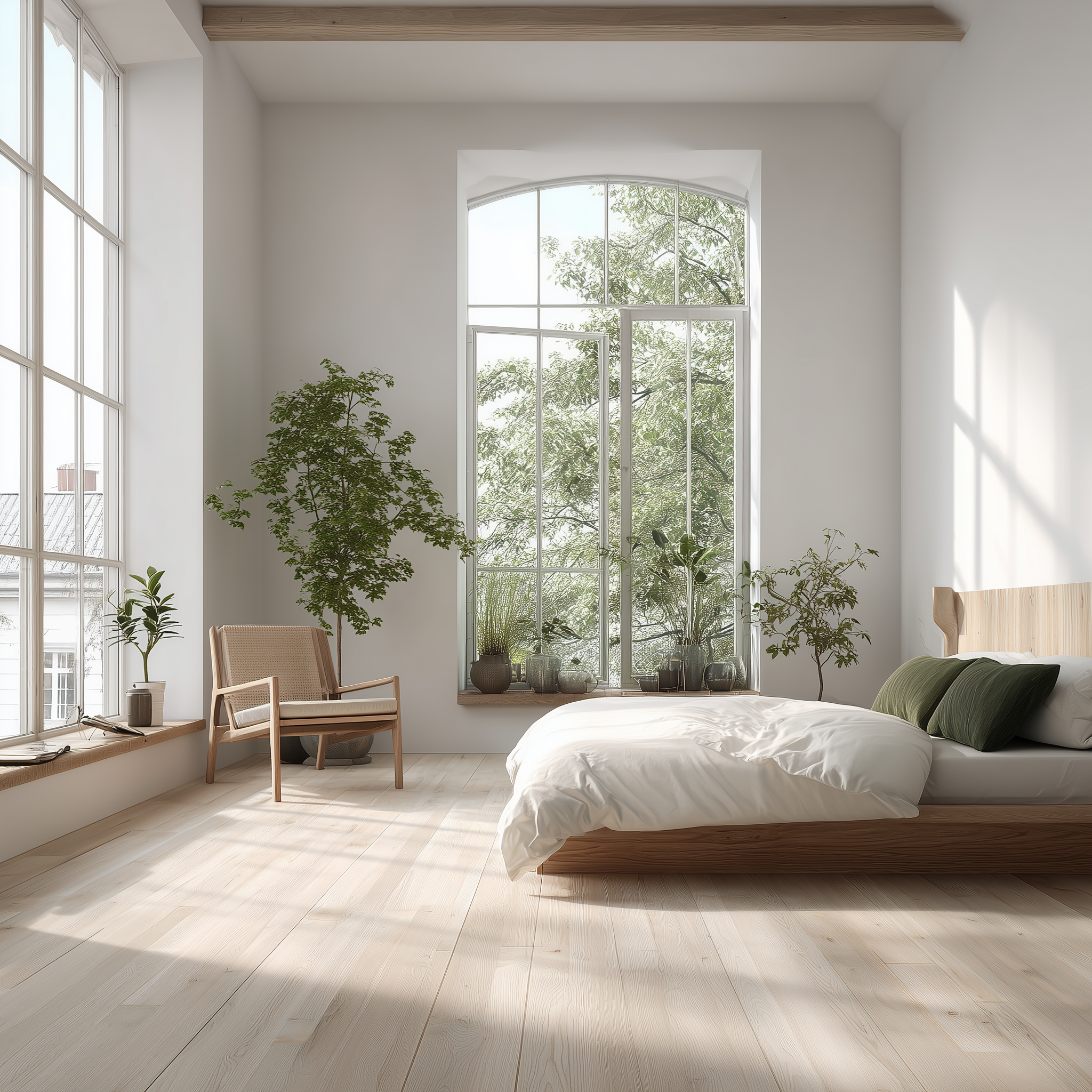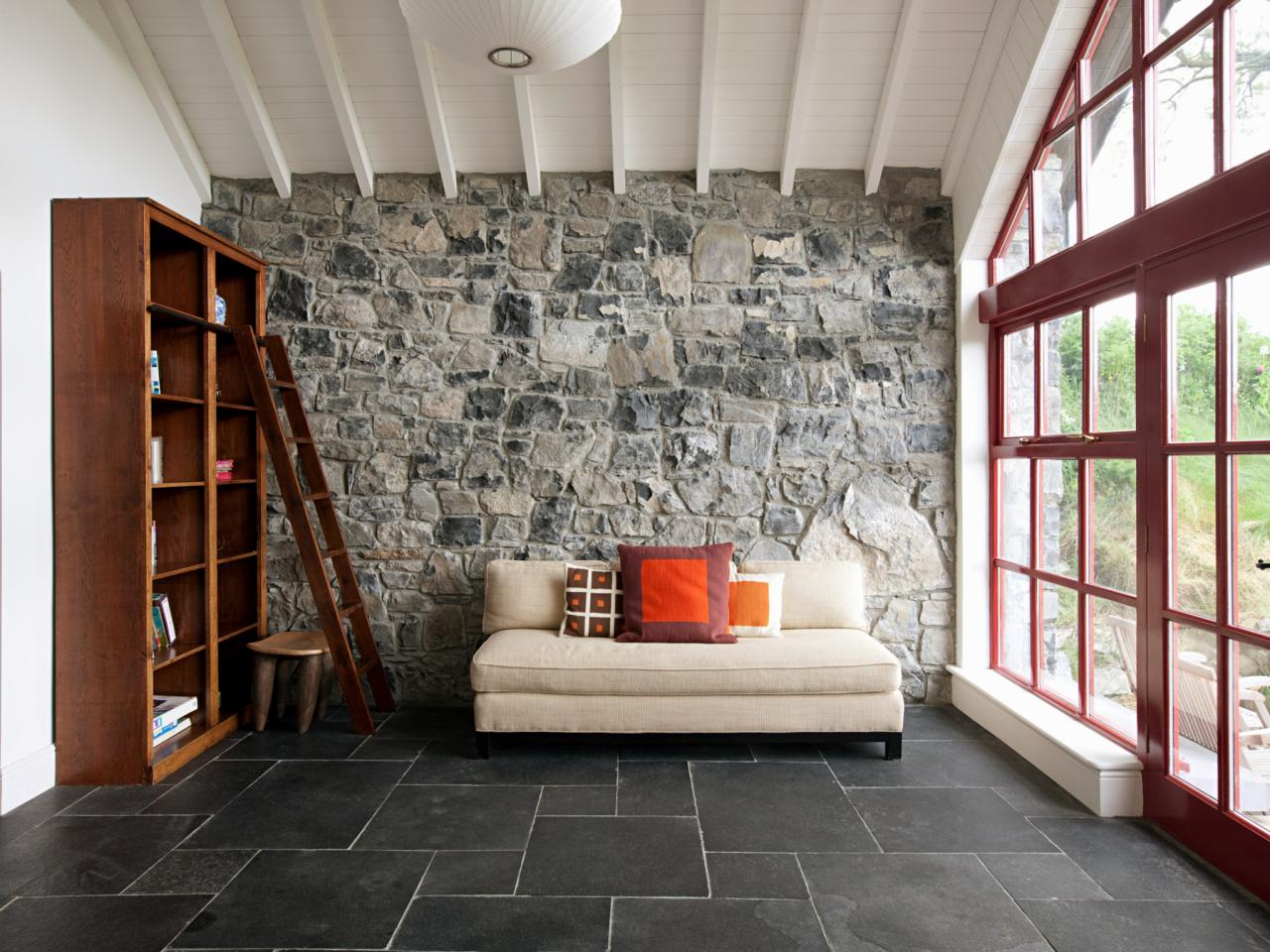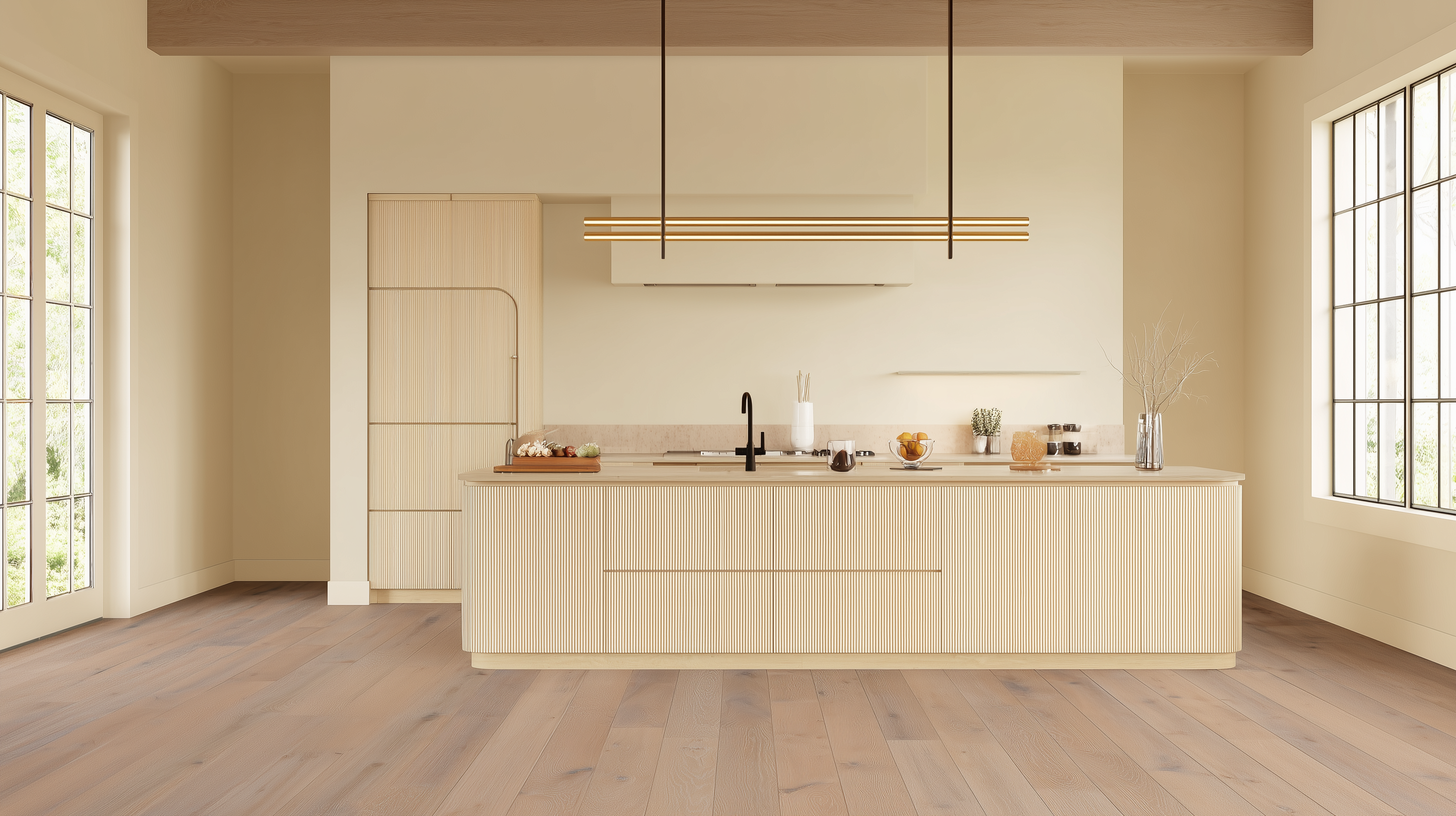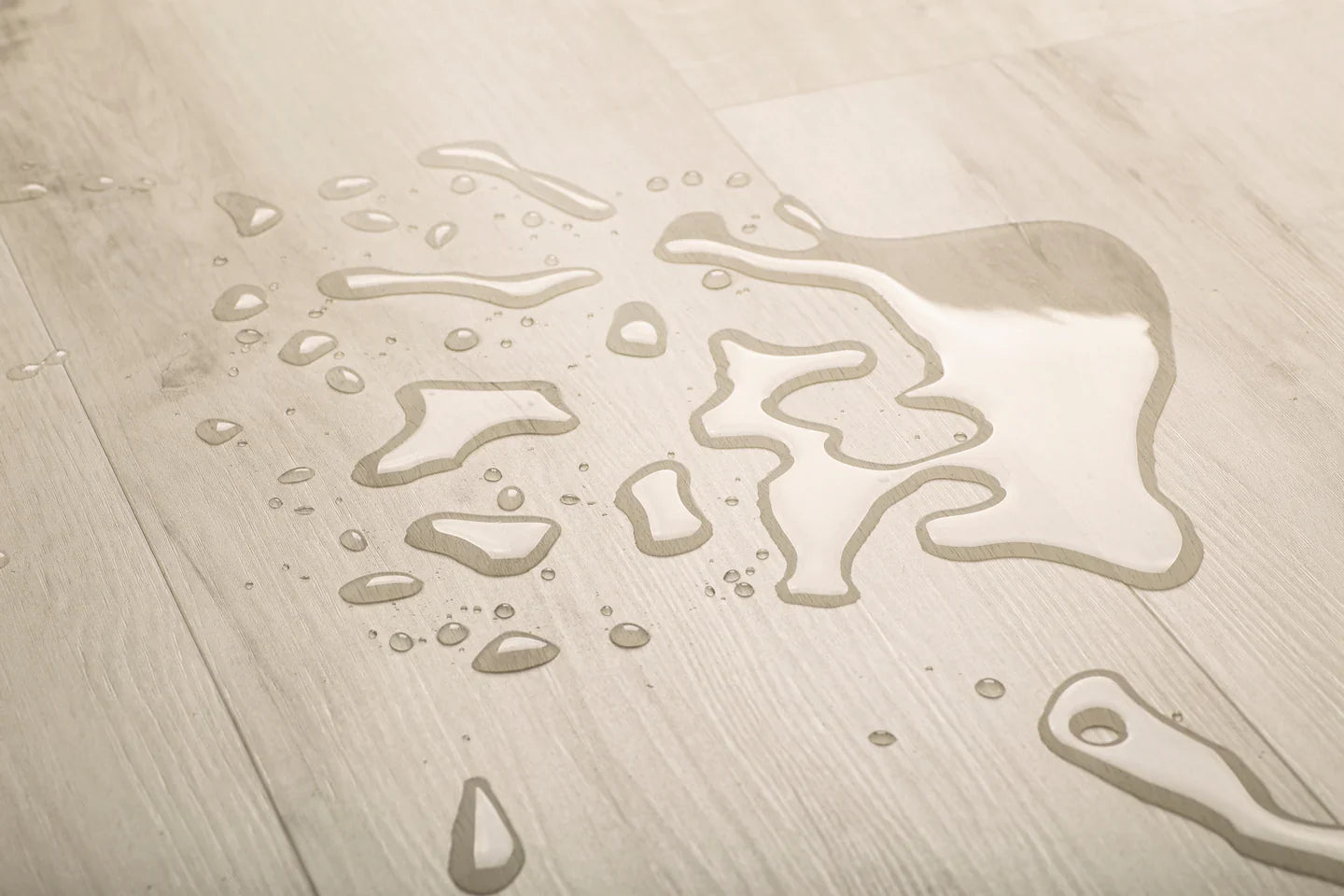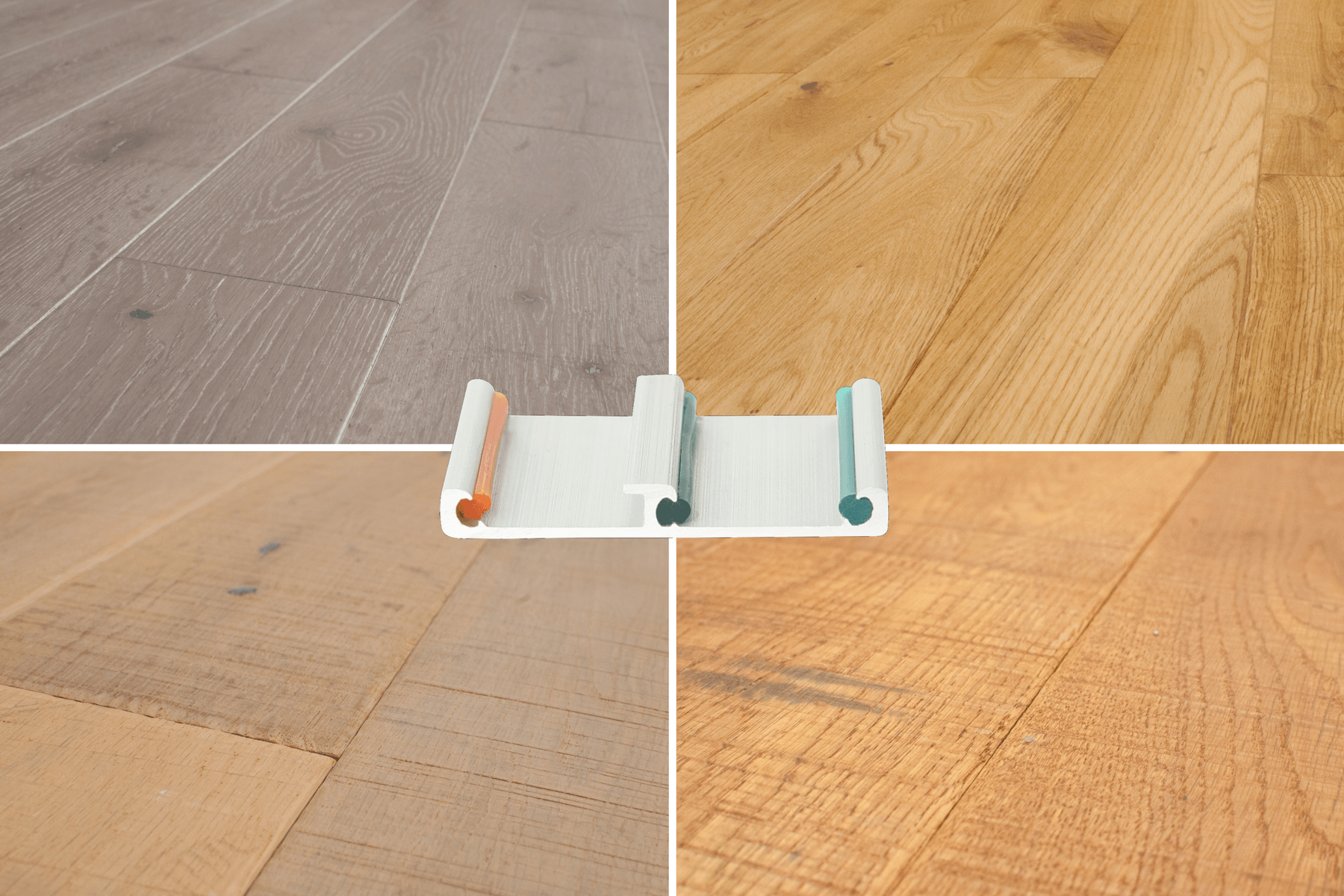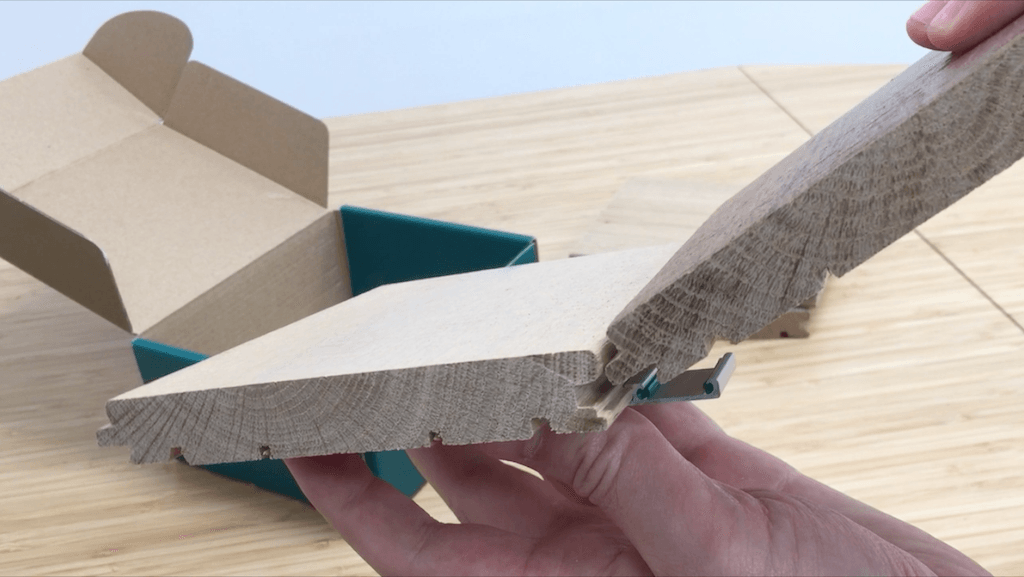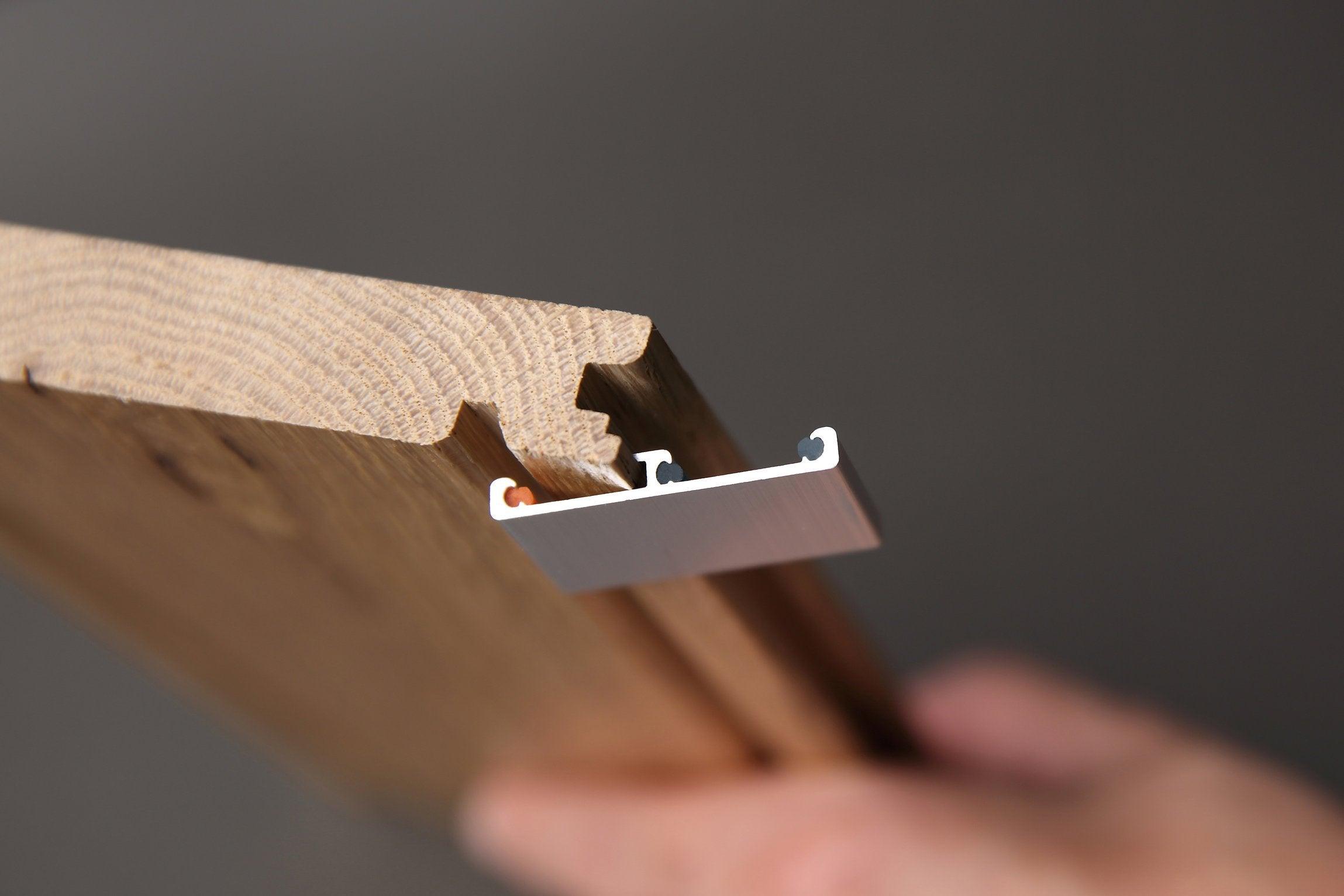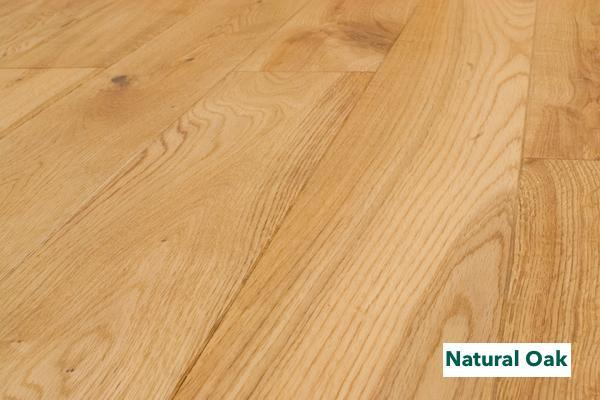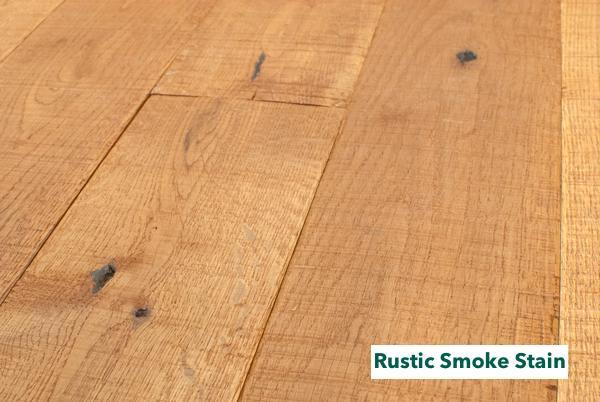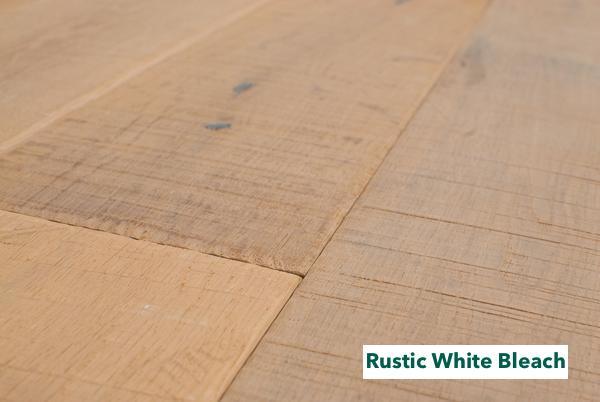Winters in the Northeast and Midwest can be brutal, not just for homeowners, but for their floors. Cold concrete basements, dry indoor air, and sudden temperature swings all put stress on materials that aren’t built to handle extreme climates. Choosing the best basement flooring for cold climates means finding something that stays warm, stable, and beautiful, no matter what’s happening outside.
According to the U.S. Department of Energy, floors account for nearly 10% of a home’s total heat loss in winter, especially when installed over uninsulated concrete (Energy.gov). That’s why insulation, underlayment, and material choice matter just as much as design.
Traditional flooring like tile or vinyl can feel icy underfoot, while carpet traps moisture and odour. Hardwood, long seen as unsuitable for basements, is making a comeback, thanks to innovations like Easiklip flooring. Its solid European oak planks use a patented floating clip system that eliminates glue and nails, allowing the wood to expand and contract naturally as temperatures change.
For homeowners in regions like Michigan, Illinois, or New York, this means real hardwood warmth without warping, cracking, or the chill of cold tile. Easiklip’s design makes it easier to insulate, ventilate, and refinish over time, ideal for spaces that battle frost and humidity alike.
In the sections ahead, we’ll explore what makes a floor cold-climate ready, how to prevent moisture damage, and why Easiklip’s floating hardwood system is a smart, stylish choice for Northeastern and Midwestern homes.

The Challenge of Cold-Climate Basements
Basements in the Northeast and Midwest face unique environmental stress. Temperatures routinely dip below freezing, and homes experience steep humidity swings between seasons. In cities like Chicago, Detroit, and Buffalo, winter humidity can fall below 30% indoors while outdoor levels climb above 70% come spring (NOAA Climate Data). This constant expansion and contraction wreak havoc on traditional flooring materials.
Concrete subfloors make matters worse. They’re porous and often retain cold, damp air, creating conditions that promote condensation beneath flooring. Over time, this moisture can warp planks, lift seams, or even cause mildew beneath impermeable layers.
That’s why basements need flooring that balances breathability with insulation. Glue-down or nail-down hardwoods struggle in these conditions because they can’t expand freely. Vinyl and laminate resist moisture but feel cold and artificial. The solution lies in a system that combines the authenticity of wood with the adaptability of a modern floating installation.
Easiklip flooring was created with this exact challenge in mind. Its solid European oak planks connect using a patented clip system, leaving just enough flexibility for natural expansion and contraction. No adhesives. No subfloor penetration. Just genuine wood engineered to thrive where temperature and moisture shift dramatically.
Design Tip: Before installing any flooring in a basement, test for moisture. A simple plastic-sheet test left overnight on concrete will reveal condensation or dampness levels that can guide your underlayment choice.
What Makes a Floor Cold-Climate Ready
Not all flooring performs the same in a basement, especially one that battles winter freeze-thaw cycles. To be truly cold-climate ready, a floor must offer three things: stability, insulation, and protection.
-
Stability: Floors in cold regions must adapt to humidity changes without cracking or lifting.
-
Insulation: A well-chosen underlayment creates a thermal break between your floor and the cold concrete below. This not only keeps rooms warmer but improves sound absorption too. Learn more in The Best Underlayment for Hardwood Floors.
-
Protection: Moisture resistance is crucial in basements. Instead of trapping vapour beneath adhesives, floating floors create space for airflow, reducing the risk of mould and odour.
Design Tip: For added warmth, pair Easiklip with radiant floor heating or insulated foam underlayment. The combination of solid wood and thermal insulation delivers comfort even in the deepest cold.
Best Flooring Options for Cold Basements (with Pros and Cons)
Cold basements require flooring that can handle moisture and temperature shifts without sacrificing comfort. While many materials claim to perform well, few truly balance warmth, resilience, and long-term value. Here’s how the most common options compare:

1. Engineered Hardwood
-
Pros: Stable construction resists movement; stylish wood appearance.
-
Cons: Limited refinishing; some glue-down options fail with humidity changes.
-
Verdict: Good mid-range choice but less natural and repairable than solid hardwood.
2. Luxury Vinyl Plank (LVP)
-
Pros: Waterproof, durable, and easy to clean.
-
Cons: Feels cold underfoot; lacks the warmth and depth of real wood.
-
Verdict: Excellent for high-moisture zones but less inviting in living areas.
3. Tile or Stone
-
Pros: Extremely durable; water-resistant; ideal for radiant heat systems.
-
Cons: Hard, cold surface without heating; grout maintenance required.
-
Verdict: Best for utility spaces or heated floors, not cozy living areas.
4. Laminate Flooring
-
Pros: Affordable; easy to install; resistant to scratches.
-
Cons: Susceptible to swelling and delamination if moisture seeps in.
-
Verdict: Good budget option, but not for damp basements.
5. Easiklip Solid Oak Floating Hardwood
-
Pros: Real hardwood warmth, breathable floating design, no adhesives or nails.
-
Cons: Requires level subfloor and moisture control.
-
Verdict: The ideal balance of comfort, authenticity, and cold-climate performance.
Unlike traditional hardwood, Easiklip flooring installs easily over concrete using clips that secure each plank in place. The floating design accommodates natural expansion and allows airflow, making it especially well-suited to homes in regions like Minnesota, Wisconsin, and Pennsylvania where winters are long and temperatures unpredictable.
Design Tip: Combine Easiklip with insulated underlayment for a warmer, quieter space that feels like a true extension of your living area.
Why Floating Hardwood Wins in Cold Conditions
Floating hardwood flooring has become the top choice for cold-climate basements because it allows the wood to move naturally without the restrictions of glue or nails. As temperatures drop and humidity changes, traditional nailed-down hardwood can separate or squeak. Floating floors, by contrast, “float” freely above the subfloor, maintaining structural integrity and comfort.
Easiklip’s patented clip system takes this a step further. The clips lock solid oak planks securely while still allowing the flexibility needed to expand and contract with the seasons. No adhesives to dry out, no subfloor punctures to trap moisture. This design keeps the surface stable and smooth year-round.
Pairing the system with the right underlayment enhances both comfort and insulation. A moisture-resistant foam or cork base provides a thermal barrier against cold concrete and absorbs sound for a warmer, quieter basement.
Protecting Against Moisture and Temperature Swings
Cold-climate basements demand more than just a stylish floor; they need a smart system that guards against moisture and temperature extremes. When temperatures fluctuate, condensation can form beneath flooring, especially on uninsulated concrete slabs. Left unchecked, this moisture can lead to mould, odour, and long-term structural issues.
The Environmental Protection Agency (EPA) recommends maintaining basement humidity levels between 30% and 50% to prevent moisture buildup and maintain healthy indoor air quality (EPA Indoor Air Quality). That’s where smart planning and materials make the difference.
With Easiklip flooring, the floating clip system naturally creates a small air gap between the wood and subfloor, encouraging airflow and reducing trapped moisture. It also avoids adhesives that can seal vapour beneath the surface. When paired with a high-quality underlayment and vapour barrier, Easiklip delivers warmth and protection without sacrificing breathability.
Here’s how to build a moisture-safe system for cold basements:
-
Install a 6-mil vapour barrier or equivalent moisture membrane over concrete.
-
Use insulated underlayment for warmth and sound absorption.
-
Acclimate flooring for 48–72 hours before installation.
-
Keep a dehumidifier or HRV system running during peak humidity months.
Cold-Climate Insulation Tips
To keep your basement warmer year-round, focus on insulation from the ground up.
-
Add rigid foam beneath your flooring system. The U.S. Department of Energy recommends a minimum R-10 insulation beneath basement slabs in cold regions to reduce winter heat loss and improve comfort (Energy.gov Basement Insulation Guide).
-
Choose high-density insulated underlayment. Foam or cork options add a thermal break and soften the feel underfoot, enhancing Easiklip’s floating design.
-
Seal the edges and perimeter walls. Use spray foam or foam board to insulate rim joists and foundation walls, preventing cold drafts and condensation.
-
Balance indoor air. An HRV or ERV (Heat or Energy Recovery Ventilator) helps control humidity and air exchange, protecting wood and air quality through long winters.
-
Combine radiant heat with Easiklip. Solid oak planks distribute gentle radiant heat evenly, creating quiet, comfortable warmth without restricting natural expansion.
Warm Design Ideas for Cold Spaces
Function matters, but comfort completes the space. A well-chosen floor in a cold-climate basement can transform it from storage to sanctuary. The secret lies in warmth, both visual and tactile.
Here are a few design-forward ideas for basements in the Northeast and Midwest:
-
Layer warmth with tone: Choose natural or honey oak finishes to reflect light and counteract the coolness of concrete walls.
-
Blend materials thoughtfully: Pair wood flooring with tile near entryways or laundry zones for durability and visual interest.
-
Add texture and comfort: Layer rugs, upholstered furniture, and warm metallic accents for a balanced, lived-in feel.
-
Highlight natural light: Lighter finishes like Easiklip’s Natural Oak or White Washed Oak brighten low-light basements and expand visual space.
Design Tip: In open basements, maintain consistent flooring across recreation, guest, and utility areas. Seamless materials make the entire space feel larger, warmer, and more connected.

Expert Insights from Northern Builders
Builders and flooring specialists across the Northeast and Midwest agree on one thing, success in cold basements comes down to flexibility and preparation. Materials must handle the cycle of freezing winters and humid summers without separating, cracking, or trapping moisture.
According to Brett Miller, VP of Technical Standards at the National Wood Flooring Association (NWFA), “Floors in cold climates perform best when they can expand and contract freely. Floating installations offer the ideal balance of movement and stability.”
That’s exactly why professionals are turning to Easiklip flooring for the best basement flooring for cold climates projects. Its solid European oak planks are engineered for easy installation, even over uneven or concrete subfloors. The clip system lets each board move naturally with seasonal humidity changes, while its breathable design prevents the condensation issues that plague glue-down or vinyl options.
Many northern contractors also note the benefit of Easiklip’s low-maintenance finish. Its matte surface hides dust, minor scratches, and salt residue that are common in winter months, especially in entry-level basement spaces.
Design Tip: For basements in areas like Minneapolis or Boston, consider radiant heating paired with Easiklip’s floating system. The combination ensures consistent warmth underfoot without restricting the natural movement of the wood.
Comfort Starts from the Ground Up
A cold basement doesn’t have to feel cold. The right flooring can transform it into a comfortable, functional extension of your home. In the Northeast and Midwest, that means choosing materials that balance beauty with performance, flooring that resists moisture, stabilizes through the seasons, and insulates against harsh winter chill.
Easiklip hardwood flooring delivers exactly that. Its floating solid oak design removes the need for adhesives or nails, giving your home authentic warmth and lasting durability. With the proper underlayment and moisture protection, it offers the comfort of hardwood in places most homeowners never thought possible.
Before your next renovation:
-
Explore Easiklip collections for tone and texture inspiration.
-
Learn how to install an Easiklip floating hardwood floor step by step.
-
Order a sample pack to see how solid oak performs in your space and lighting.
“The most successful basements start with smart systems, materials that adapt to their environment rather than fight it.”
With Easiklip, your floor stays stable, your home stays warm, and your comfort lasts through every season.
